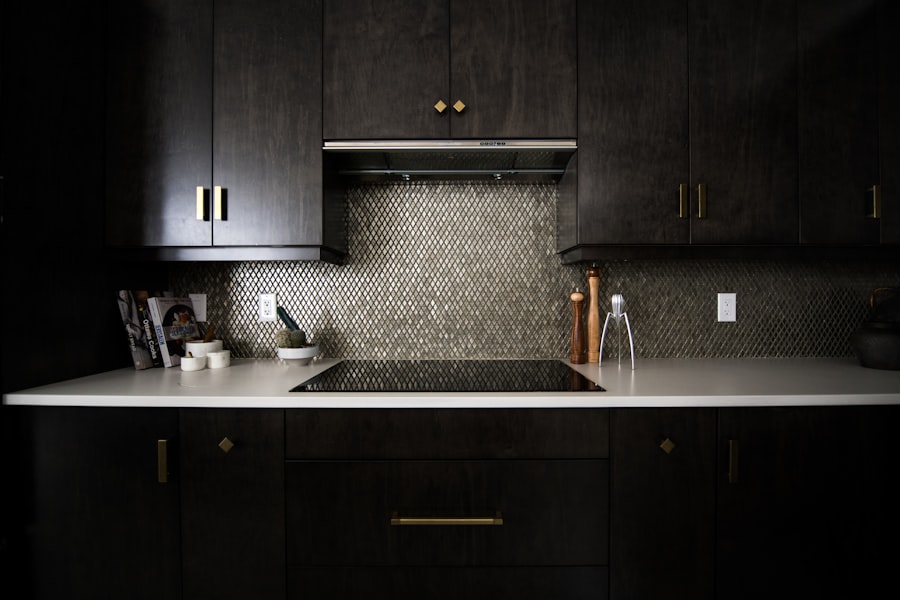The history of antique furniture is a fascinating journey through time, reflecting the cultural, social, and economic changes that have shaped societies across the globe. Antique furniture typically refers to pieces that are at least 100 years old, and their origins can be traced back to various historical periods, including the Renaissance, Baroque, Rococo, and Victorian eras. Each of these periods is characterized by distinct styles, craftsmanship, and materials that tell a story about the people who created and used them.
For instance, Renaissance furniture often features intricate carvings and rich woods like oak and walnut, while Victorian pieces are known for their elaborate ornamentation and use of new industrial materials. The evolution of furniture design is also closely linked to technological advancements. The introduction of new tools and techniques allowed artisans to create more complex forms and elaborate details.
For example, the invention of the lathe in the 16th century enabled craftsmen to produce turned legs and spindles with greater precision. As trade routes expanded, exotic woods and materials became available, leading to the incorporation of elements from different cultures into furniture design. This cross-pollination of styles is evident in pieces that blend European craftsmanship with Asian motifs, showcasing the global influences that have shaped antique furniture over centuries.
Key Takeaways
- Antique furniture has a rich history dating back to ancient civilizations, with each era contributing unique styles and craftsmanship.
- The appeal of antique furniture in Dubai lies in its timeless elegance, quality craftsmanship, and the ability to add character to modern interiors.
- Antique furniture can be found in Dubai at specialized antique shops, auctions, online platforms, and even at local markets and souks.
- When buying antique furniture in Dubai, it’s important to do thorough research, inspect the piece for authenticity and condition, and consider seeking professional advice.
- Restoring and maintaining antique furniture in Dubai requires careful handling, regular cleaning, and occasional restoration by skilled professionals to preserve its value and beauty.
The Appeal of Antique Furniture in Dubai
In Dubai, the allure of antique furniture is multifaceted, appealing to both residents and visitors who appreciate the stories and craftsmanship behind each piece. The city’s unique blend of modernity and tradition creates an environment where antique furniture can thrive. Many individuals are drawn to these pieces not only for their aesthetic value but also for their historical significance.
Owning a piece of history allows collectors to connect with the past in a tangible way, making antique furniture a conversation starter in homes and offices alike. Moreover, antique furniture often embodies a level of craftsmanship that is increasingly rare in contemporary mass-produced items. The meticulous attention to detail, the quality of materials used, and the artistry involved in creating these pieces resonate with those who value authenticity and uniqueness.
In a city like Dubai, where luxury and opulence are prevalent, antique furniture offers a distinctive charm that sets it apart from modern furnishings. The character and patina of aged wood or the intricate carvings on a vintage piece can evoke a sense of nostalgia and warmth that new furniture often lacks.
Where to Find Antique Furniture in Dubai

Dubai boasts a vibrant market for antique furniture, with numerous shops, galleries, and markets dedicated to showcasing these unique pieces. One of the most popular destinations for antique enthusiasts is the Al Quoz district, where several galleries specialize in vintage and antique items. These galleries often curate collections that span various styles and periods, allowing visitors to explore a diverse range of options.
Additionally, the Dubai Design District (d3) hosts events and exhibitions that feature antique furniture alongside contemporary designs, creating an engaging dialogue between old and new. Another notable location is the Dubai Flea Market, which takes place in various parks throughout the city. This open-air market is a treasure trove for those seeking unique finds, including antique furniture.
Vendors often bring a mix of vintage items, from mid-century modern pieces to ornate Victorian furniture. The atmosphere is lively, with opportunities to haggle and discover hidden gems that may not be found in traditional retail settings. Furthermore, online platforms such as Dubizzle and Facebook Marketplace have become increasingly popular for buying and selling antique furniture, providing a convenient way for collectors to connect with sellers across the city.
Tips for Buying Antique Furniture in Dubai
When venturing into the world of antique furniture shopping in Dubai, it is essential to approach the process with knowledge and discernment. One crucial tip is to educate yourself about the specific styles and periods you are interested in. Understanding the characteristics of different eras can help you identify authentic pieces versus reproductions or fakes.
For instance, knowing how to recognize the joinery techniques used in 18th-century furniture can be invaluable when assessing a potential purchase. Another important consideration is to examine the condition of the piece thoroughly. Look for signs of wear that may indicate authenticity, such as patina on wood surfaces or original hardware.
However, be cautious of excessive damage that could compromise the integrity of the furniture. It’s also wise to inquire about any restoration work that has been done; while some repairs can enhance a piece’s value, others may detract from its historical significance. Engaging with knowledgeable sellers who can provide provenance or documentation can further ensure that you are making an informed investment.
Restoring and Maintaining Antique Furniture in Dubai
Restoring antique furniture requires a delicate balance between preserving its original character and ensuring its longevity. In Dubai’s climate, where humidity can affect wooden pieces, proper maintenance becomes even more critical. Regular cleaning with a soft cloth can help remove dust without damaging delicate finishes.
For deeper cleaning or restoration work, it is advisable to consult professionals who specialize in antique restoration. They possess the expertise needed to address issues such as water damage or structural instability while maintaining the integrity of the piece. Additionally, protecting antique furniture from direct sunlight is essential to prevent fading and deterioration.
Using UV-filtering window treatments can help mitigate this risk while still allowing natural light into your space. When it comes to humidity control, using dehumidifiers or placing silica gel packets within cabinets can help maintain an optimal environment for wooden pieces. Regularly inspecting your furniture for signs of pests or mold will also ensure that your antiques remain in good condition for years to come.
Incorporating Antique Furniture into Modern Interiors

Integrating antique furniture into modern interiors presents an exciting opportunity to create unique spaces that reflect personal style while honoring history. One effective approach is to use antique pieces as focal points within contemporary settings. For example, a beautifully restored Victorian armchair can add a touch of elegance to a minimalist living room dominated by sleek lines and neutral colors.
This juxtaposition not only highlights the beauty of the antique but also enhances the overall aesthetic by providing contrast. Another strategy is to mix different styles intentionally. Combining mid-century modern furniture with ornate Baroque pieces can create an eclectic look that feels curated rather than chaotic.
Accessories such as modern art or contemporary lighting fixtures can further bridge the gap between old and new, allowing antique furniture to coexist harmoniously within a modern context. Additionally, using antique items as functional elements—such as a vintage side table or an ornate cabinet—can infuse character into everyday living spaces while serving practical purposes.
The Investment Value of Antique Furniture in Dubai
Antique furniture can be a wise investment choice for those looking to diversify their portfolios or simply appreciate beautiful craftsmanship over time. In Dubai’s dynamic market, certain pieces have shown significant appreciation in value due to their rarity and demand among collectors. Factors such as provenance, condition, and historical significance play crucial roles in determining an item’s worth.
For instance, pieces attributed to renowned makers or those with unique stories often command higher prices at auctions or private sales. Moreover, as global interest in sustainable living grows, many individuals are turning towards vintage and antique items as alternatives to mass-produced goods. This shift not only enhances the appeal of antique furniture but also contributes to its investment potential.
Collectors who are well-informed about market trends can capitalize on this growing demand by acquiring pieces that are likely to appreciate over time. Engaging with local auction houses or attending estate sales can provide opportunities to discover valuable items before they become widely recognized.
Joining the Antique Furniture Community in Dubai
Becoming part of the antique furniture community in Dubai offers enthusiasts a chance to connect with like-minded individuals who share a passion for history and craftsmanship. Various organizations and clubs host events such as lectures, workshops, and exhibitions that cater to both novice collectors and seasoned experts alike. These gatherings provide valuable insights into trends within the market while fostering relationships among collectors who can share tips on sourcing and maintaining their treasures.
Social media platforms also play a significant role in building community connections among antique lovers in Dubai. Groups dedicated to buying, selling, or discussing antique furniture allow members to showcase their collections while seeking advice from others in the field. Participating in these online forums can lead to valuable networking opportunities and even collaborations on restoration projects or exhibitions.
By immersing oneself in this vibrant community, collectors not only enhance their knowledge but also contribute to preserving the rich heritage associated with antique furniture in Dubai.
If you are looking to create a stylish and functional workspace in Dubai, you may want to consider incorporating antique furniture into your design. Antique furniture Dubai can add a touch of elegance and sophistication to any office space. For more tips on creating an effective workspace design, check out this article on effective workspace design. This article provides valuable insights on how to optimize your workspace for productivity and creativity.
FAQs
What is antique furniture?
Antique furniture refers to furniture items that are at least 100 years old. These pieces are often considered valuable due to their age, craftsmanship, and historical significance.
Where can I find antique furniture in Dubai?
There are several antique shops and dealers in Dubai that specialize in selling antique furniture. Additionally, there are also antique markets and auctions where you can find a variety of antique pieces.
What types of antique furniture are popular in Dubai?
In Dubai, popular types of antique furniture include traditional Arabic furniture, Persian rugs, ornate wooden chests, and intricately carved wooden screens. European and Asian antique furniture are also sought after by collectors and enthusiasts.
How can I determine the authenticity of antique furniture?
Authenticating antique furniture requires knowledge of different wood types, construction techniques, and historical periods. It is recommended to consult with a reputable antique appraiser or dealer to verify the authenticity of a piece.
What are the factors to consider when buying antique furniture in Dubai?
When buying antique furniture in Dubai, it is important to consider the condition of the piece, its provenance, the reputation of the seller, and any restoration or repairs that may have been done. Additionally, it’s important to consider the style and design of the furniture in relation to your own preferences and existing decor.


